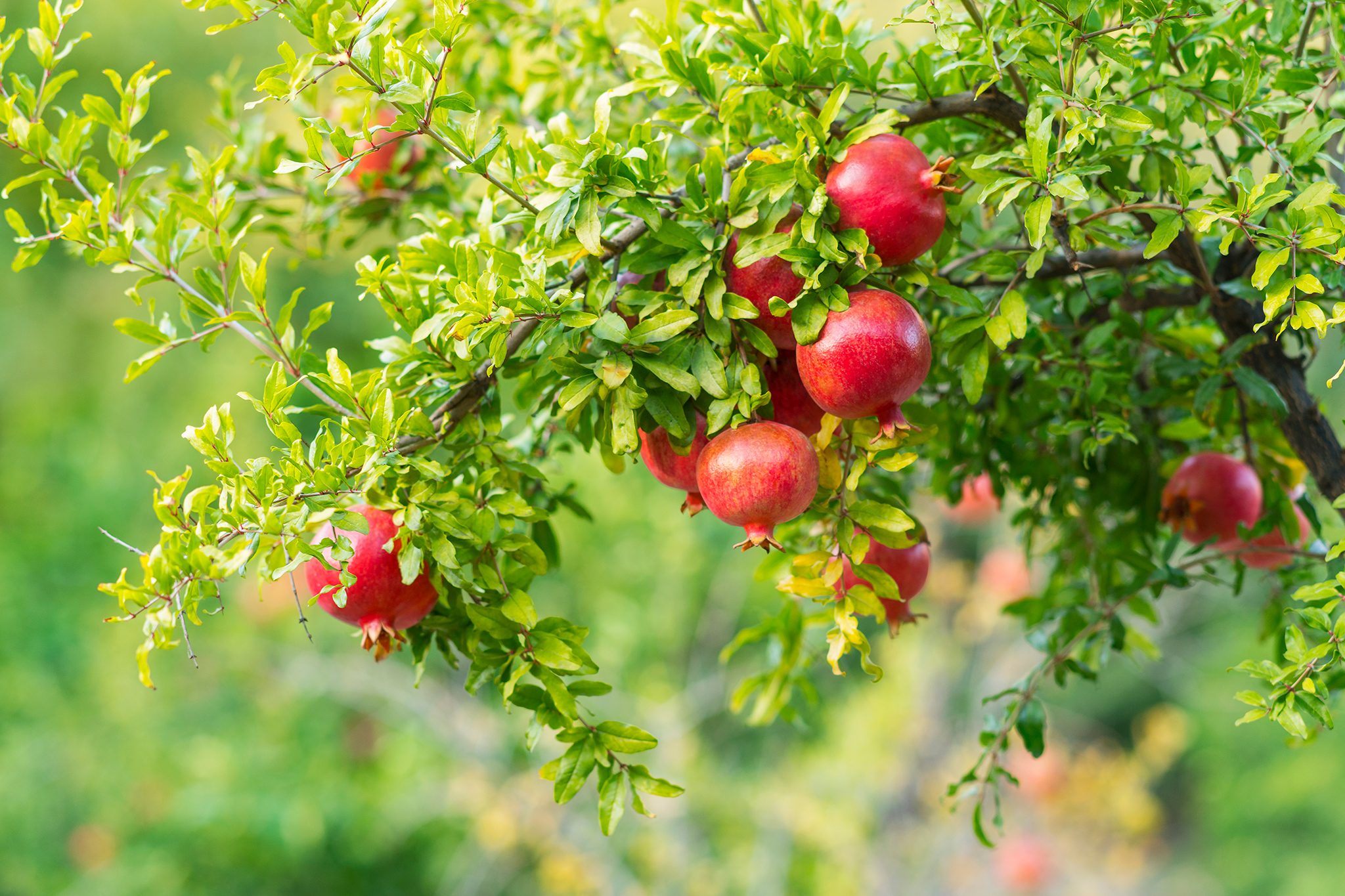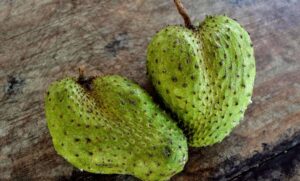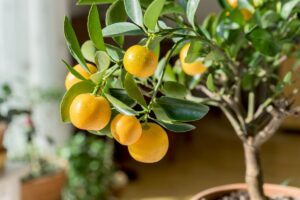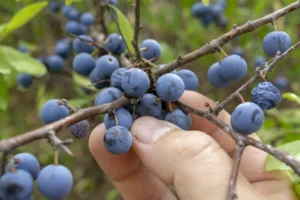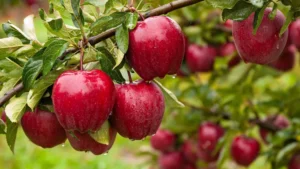How to Grow and Care for Pomegranate: A Complete Guide
Growing pomegranates can be incredibly rewarding, whether you’re planting them in your garden, in containers, or growing them from seed. These beautiful fruit-bearing trees not only provide delicious, nutritious fruits but also serve as attractive ornamental plants with vibrant orange-red flowers and glossy foliage.
In this comprehensive guide, you’ll learn everything you need to know about growing and caring for pomegranate trees in various settings, from seed starting to harvest, with special focus on techniques that work well in the US climate.
Understanding Pomegranates
Pomegranates (Punica granatum) are deciduous or semi-evergreen shrubs or small trees native to regions from Iran to northern India. They’ve been cultivated for thousands of years and are well-adapted to Mediterranean climates with hot, dry summers and mild winters.
Climate Requirements
Pomegranates thrive in USDA hardiness zones 8-11, though some varieties can survive in zone 7 with protection. According to the USDA Agricultural Research Service, pomegranates perform best in areas that have:
- Long, hot summers
- Minimal humidity
- Winter temperatures that rarely drop below 10°F (-12°C)
- At least 150 frost-free days per year
Planting Pomegranates in Your Garden
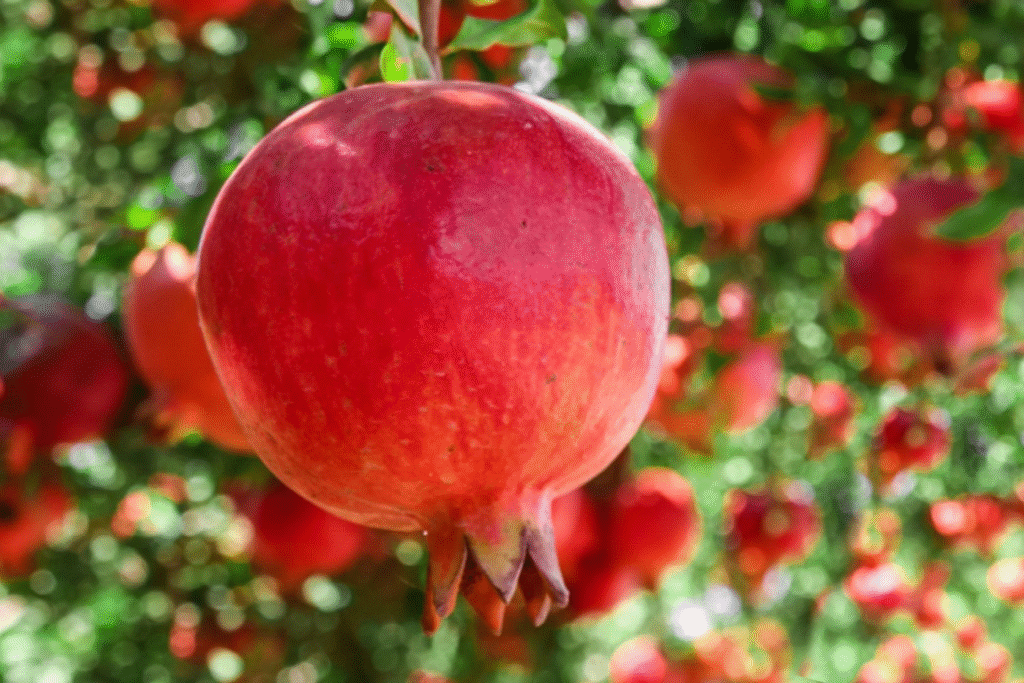
Selecting the Right Location
For successful pomegranate cultivation in your garden:
- Choose a spot with full sun exposure (6-8 hours daily)
- Ensure good air circulation
- Select well-draining soil with pH 5.5-7.0
- Allow 15-20 feet between trees (for standard varieties)
- Consider proximity to buildings and other structures, as mature trees can reach 12-15 feet tall
Planting Process
The best time to plant pomegranates in most US regions is late winter to early spring. Here’s how to plant your pomegranate tree:
- Dig a hole twice as wide and just as deep as the root ball
- Mix compost or well-rotted manure into the excavated soil
- Place the plant in the hole with the root ball level with the soil surface
- Backfill with amended soil, tamping gently to eliminate air pockets
- Water thoroughly after planting
- Apply 2-3 inches of mulch around the base, keeping it away from the trunk
Growing Pomegranates in Containers
Container growing is an excellent option if you live in colder regions or have limited space. This method allows you to move your pomegranate indoors during harsh winter months.
Container Selection and Preparation
- Choose a large container (at least 15-20 gallons) with drainage holes
- Use high-quality potting mix with added perlite for drainage
- Consider dwarf varieties like ‘Nana’ for container cultivation
Maintenance for Potted Pomegranates
Potted pomegranates require more consistent care:
- Water when the top inch of soil feels dry
- Fertilize every 2-4 weeks during the growing season with a balanced fertilizer
- Move to a protected location when temperatures drop below freezing
- Repot every 2-3 years with fresh soil
Growing Pomegranates from Seed
While growing from seed takes longer to produce fruit (4-7 years versus 2-3 years for purchased plants), it can be a fun and rewarding process.
Seed Starting Process
- Extract seeds from a ripe pomegranate
- Clean off all pulp and dry the seeds overnight
- Stratify seeds in the refrigerator for 30-60 days (place in damp paper towel inside a sealed bag)
- Plant stratified seeds ¼ inch deep in seed-starting mix
- Keep soil consistently moist but not waterlogged
- Maintain temperature between 70-85°F (21-29°C)
- Expect germination within 30-45 days
- Transplant seedlings to larger containers once they have 2-3 sets of true leaves
Essential Care for Pomegranate Trees
Watering Guidelines
Proper watering is crucial for pomegranate development:
| Growth Stage | Watering Frequency (Garden) | Watering Frequency (Container) | Amount |
|---|---|---|---|
| Establishment (Year 1) | Weekly | Every 3-4 days | 1-2 gallons |
| Young Tree (Years 2-3) | Every 7-10 days | Every 4-5 days | 2-5 gallons |
| Mature Tree | Every 10-14 days | Weekly | 5-10 gallons |
| Flowering/Fruiting | Every 7-10 days | Every 3-4 days | 5-10 gallons |
| Dormancy (Winter) | Monthly (if dry) | Every 3-4 weeks | Minimal |
Fertilization Schedule
Pomegranates aren’t heavy feeders but benefit from regular feeding:
- For young trees: Apply a balanced fertilizer (10-10-10) in early spring, using 1/8 lb per year of tree age
- For mature trees: Apply up to 1 lb of balanced fertilizer in early spring
- Avoid high-nitrogen fertilizers, which promote foliage at the expense of fruit
- Consider applying compost around the drip line annually
Pruning Techniques
Proper pruning improves fruit production and maintains plant health:
For Young Trees (1-3 years)
- Remove suckers from the base
- Select 3-5 main trunks and remove others
- Prune to establish an open vase shape
For Mature Trees
- Remove dead, damaged, or crossing branches annually
- Thin overcrowded areas to improve light penetration
- Prune to maintain desired height (12-15 feet for standard varieties)
- Time pruning for late winter before new growth begins
Common Pests and Diseases
Pomegranates are relatively pest-resistant, but they can face some challenges:
Pests
- Aphids: Treat with insecticidal soap or neem oil
- Leaf-footed bugs: Remove by hand or use insecticidal soap
- Mealybugs: Apply horticultural oil or insecticidal soap
Diseases
- Fruit rot: Ensure good air circulation and avoid overhead watering
- Leaf spot: Remove affected leaves and improve air circulation
- Root rot: Prevent by ensuring good drainage and avoiding overwatering
Harvesting and Storing Pomegranates
Knowing when and how to harvest is key to enjoying the best quality fruit:
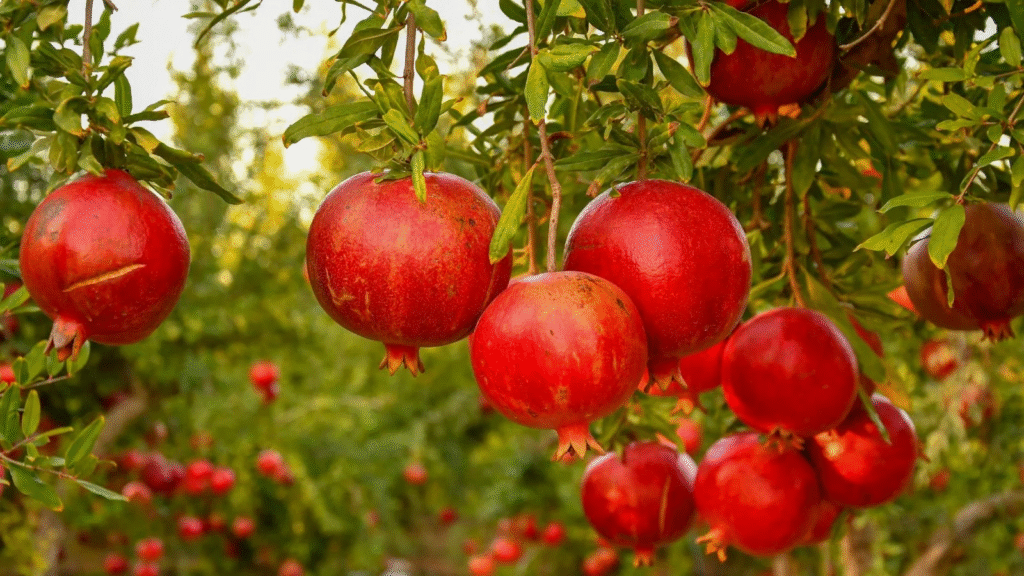
Harvest Indicators
- Fruit develops characteristic color (deep red, pink, or yellowish-green depending on variety)
- Skin becomes leathery and tough
- Fruit makes a metallic sound when tapped
- Usually ready 6-7 months after flowering
Harvesting Process
- Use pruning shears to cut the fruit stem close to the branch
- Handle carefully to avoid puncturing the skin
- Harvest before heavy rain to prevent fruit splitting
Storage
- Room temperature: 1-2 weeks
- Refrigerator: 1-2 months
- Arils (seeds): Can be frozen for up to 12 months
Growing Pomegranates in Different US Regions
Southern States (Zones 8-10)
- Ideal conditions for in-ground cultivation
- Plant in fall or early spring
- Consider heat-resistant varieties like ‘Wonderful’ or ‘Sweet’
Western States
- Perfect in California, Arizona, and parts of Nevada
- May need frost protection in early years
- Water management crucial in drought-prone areas
Northern/Northeastern States (Zones 5-7)
- Container growing recommended
- Bring indoors or provide significant winter protection
- Consider cold-hardy varieties like ‘Russian’ or ‘Kazake’
Popular Pomegranate Varieties for US Gardens
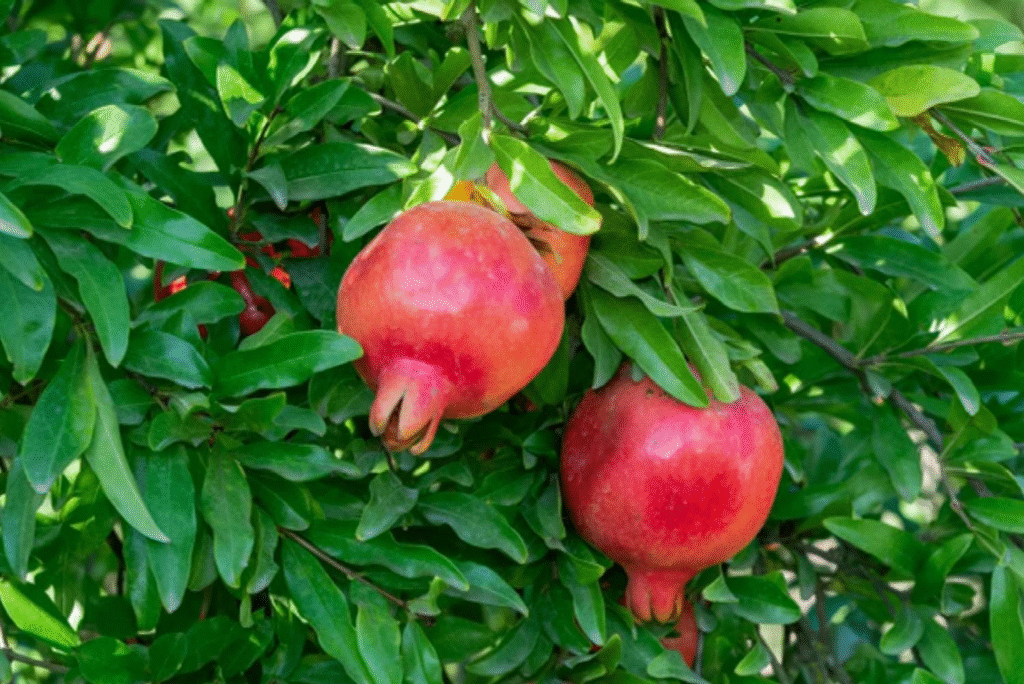
Commercial Varieties
- ‘Wonderful’: Most common commercial variety, large red fruit with excellent flavor
- ‘Early Wonderful’: Similar to ‘Wonderful’ but ripens earlier
- ‘Granada’: Sweet-tart flavor, earlier ripening than ‘Wonderful’
Ornamental/Dwarf Varieties
- ‘Nana’: Dwarf variety perfect for containers, reaching only 3 feet tall
- ‘State Fair’: Ornamental variety with double flowers and small fruit
Cold-Hardy Varieties
- ‘Russian Red’: More cold-hardy than standard varieties
- ‘Salavatski’: Can withstand temperatures down to 0°F with protection
The US Pomegranate Market
The US pomegranate market has experienced significant growth in recent years, with California producing about 90% of the domestic commercial crop. According to market research, annual pomegranate consumption in the US has increased by approximately 20% over the past decade.
Home growers are perfectly positioned to benefit from this trend by growing their own pomegranates, which typically fetch premium prices at farmers’ markets and local produce stands.
Health Benefits of Homegrown Pomegranates
Growing your own pomegranates gives you access to freshly harvested fruit with maximum nutritional benefits. According to the National Institutes of Health, pomegranates are rich in:
- Antioxidants (higher levels than red wine or green tea)
- Vitamin C
- Potassium
- Fiber
- Polyphenols with potential anti-cancer properties
By growing your own, you can harvest at peak ripeness and avoid preservatives or treatments often used on commercial fruit.
Conclusion
Growing pomegranates can be a richly rewarding experience that provides beautiful ornamental value and delicious, nutritious fruit. Whether you’re planting in your garden, growing in containers, or starting from seed, proper care and maintenance will help ensure success.
Remember that pomegranates are somewhat drought-tolerant once established and generally require less maintenance than many other fruit trees. With the right conditions and care, your pomegranate trees can produce fruit for 50 years or more, making them a wonderful long-term addition to your landscape.
